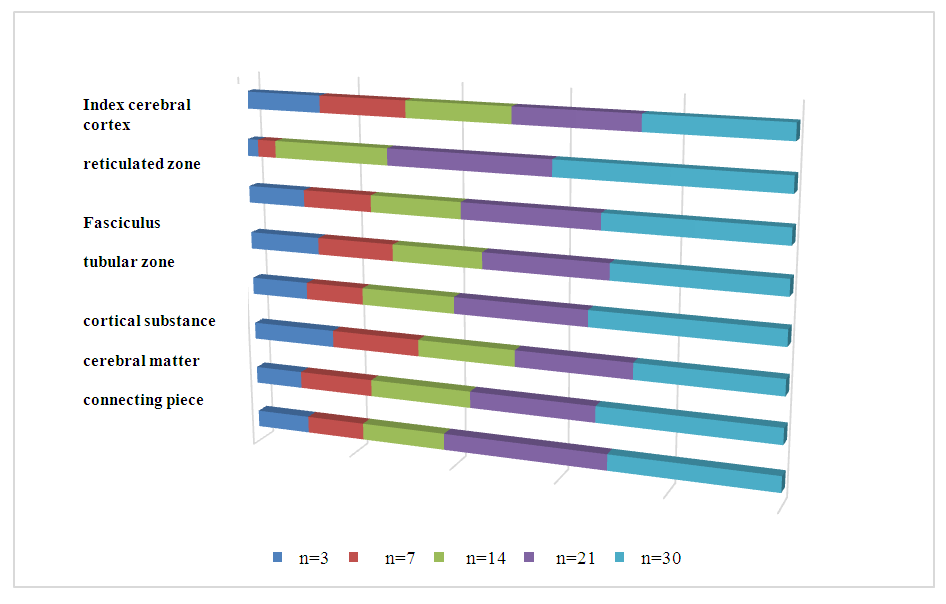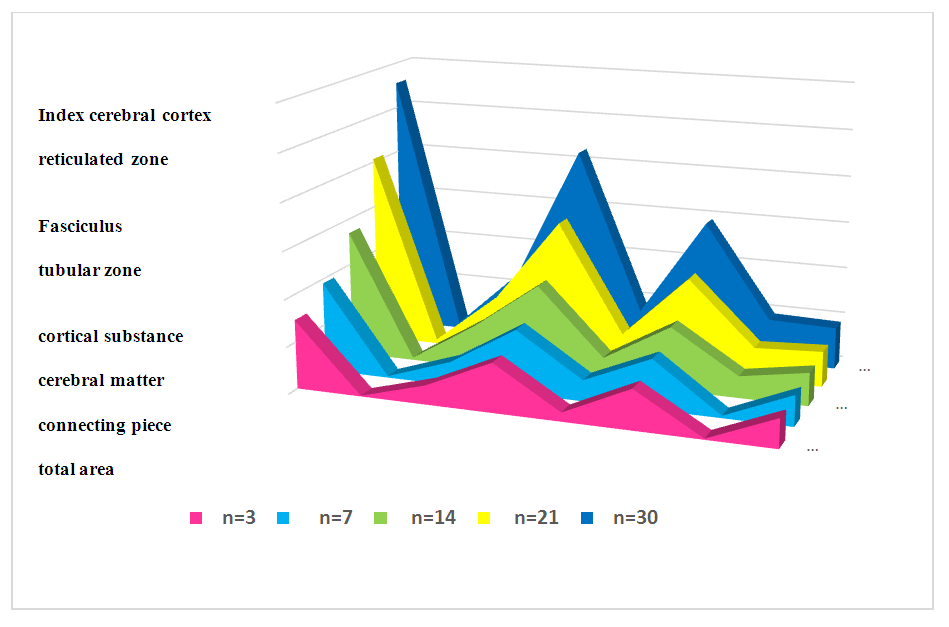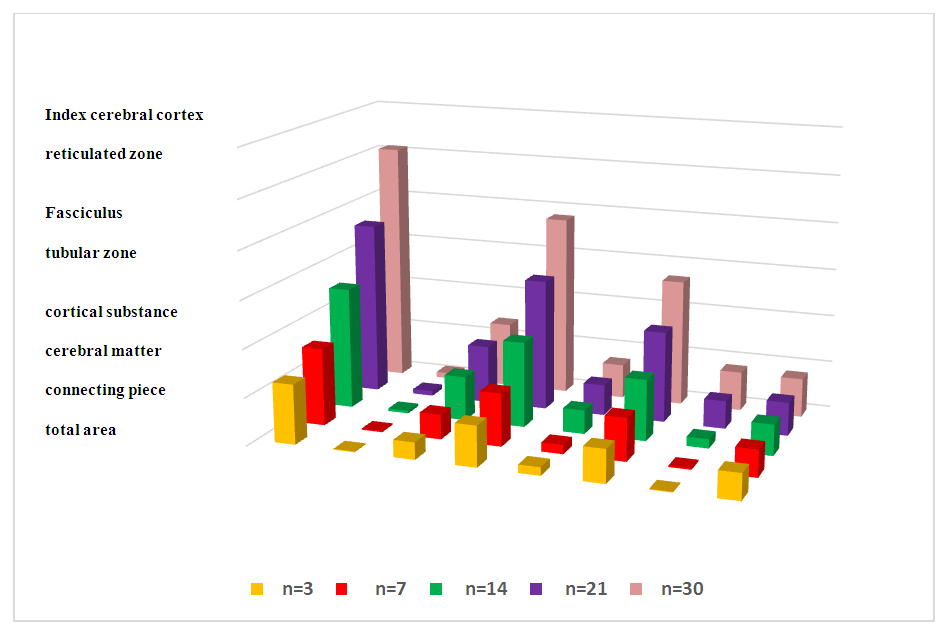-
Paper Information
- Next Paper
- Previous Paper
- Paper Submission
-
Journal Information
- About This Journal
- Editorial Board
- Current Issue
- Archive
- Author Guidelines
- Contact Us
American Journal of Medicine and Medical Sciences
p-ISSN: 2165-901X e-ISSN: 2165-9036
2024; 14(11): 2781-2784
doi:10.5923/j.ajmms.20241411.23
Received: Sep. 18, 2024; Accepted: Oct. 18, 2024; Published: Nov. 12, 2024

Determination of Morphological and Morphometric Changes in Adrenal Cortex Structures in Offspring Exposed to Pesticides
Sabirova Dilnoza Shukhratovna, Oripov Firdavs Suratovich
Samarkand State Medical University, Uzbekistan
Correspondence to: Oripov Firdavs Suratovich, Samarkand State Medical University, Uzbekistan.
| Email: |  |
Copyright © 2024 The Author(s). Published by Scientific & Academic Publishing.
This work is licensed under the Creative Commons Attribution International License (CC BY).
http://creativecommons.org/licenses/by/4.0/

Relevance. Studies on the impact of modern pesticides on adrenal development in the Republic of Uzbekistan have been insufficiently conducted. The main part of experimental and clinical observations concerning the mechanism and complications of exposure to new generation pesticides was conducted on adult experimental animals or humans. The aim: Determine morphometric changes of the adrenal cortex in offspring exposed to pesticides. Materials and methods of research. The object of the study was white sexually mature non-pregnant female Wistar rats with body weight of 180-200 g, as well as their offspring. Experimental groups of female rats received pesticides lambda-cyhalothrin (titanium) at the rate of 8 mg/kg and Cyrax 25% k.e. at the rate of 3.6 mg/kg daily until the end of the experiments. Results of the study. Morphometric data show that morphologically structural components of different parts of the adrenal gland have comparatively different indices. More significant changes in morphometric indices of structural components of the adrenal gland in the control group of animals are observed on 14, 21 and 30 days of postnatal development. Conclusion. It is clear that the growth of organs and tissues in the postnatal period of development is associated with cell proliferation. In the process of physiological growth and development there is a certain balance between the processes of cell proliferation and apoptosis.
Keywords: Pesticides, Toxic chemicals, Proliferation, Postnatal period
Cite this paper: Sabirova Dilnoza Shukhratovna, Oripov Firdavs Suratovich, Determination of Morphological and Morphometric Changes in Adrenal Cortex Structures in Offspring Exposed to Pesticides, American Journal of Medicine and Medical Sciences, Vol. 14 No. 11, 2024, pp. 2781-2784. doi: 10.5923/j.ajmms.20241411.23.
Article Outline
1. Relevance
- Studies on the impact of modern pesticides on adrenal development in the Republic of Uzbekistan have been insufficiently conducted. The main part of experimental and clinical observations concerning the mechanism and complications of exposure to new generation pesticides was conducted on adult experimental animals or humans. But it is the prenatal and early postnatal period that is considered to be very critical in terms of possible increase of serious complications from pesticide exposure.
2. The Aim
- Determine morphometric changes of the adrenal cortex in offspring exposed to pesticides.
3. Materials and Methods of Research
- The object of the study was white sexually mature non-pregnant female Wistar rats with body weight of 180-200 g, as well as their offspring. Experimental groups of female rats received pesticides lambda-cyhalothrin (titanium) at the rate of 8 mg/kg and Cyrax 25% k.e. at the rate of 3.6 mg/kg daily until the end of the experiments. The material for studies from offspring of all groups of animals was obtained on 3, 7, 14, 21, 30 and 90 days after birth. Methods of light microscopy, morphometry, and electron microscopy were used. Light microscopy and semi-thin sections were used for the study. The adrenal glands and pituitary gland were first subjected to weighing and then fixed in 10% neutral formalin or in Bouin's or Carnoua's solutions. After the necessary processing steps, the organs were embedded in paraffin. To study the general histology of the organ structure, the sections taken after deparaffinization were stained with hematoxylin and eosin.
4. Results of the Study
- Morphometric data show that morphologically structural components of different parts of the adrenal gland have comparatively different indices. More significant changes in morphometric indices of structural components of the adrenal gland in the control group of animals are observed on 14, 21 and 30 days of postnatal development. The growth of morphometric indices during these periods of development is mainly due to the cortical substance, in particular, structural components of the fascicular zone (Fig. 1).
 | Figure 1. Comparative morphometric indices of different structural parts of adrenal glands of offspring of control rats in different periods of early postnatal ontogenesis |
5. Conclusions
- Thus, as a result of chronic exposure to pesticides through the maternal organism, there is a significant slowdown in the formation and development of adrenal cortical zones in the offspring of experimental animals. Under the influence of cyhalothrin the growth rate of the area of the cortical substance zones of the adrenal gland decreases by 15-30%, and under the poisoning with Cyrax by 23-40% in comparison with the control group of animals. Decrease of adrenal cortical substance area indices is connected mainly with lagging of growth of fascicular and tubular zones, which amounted to 10-25% in case of cyhalothrin poisoning and 20-40% in case of Cirax exposure. It is clear that the growth of organs and tissues in the postnatal period of development is associated with cell proliferation. In the process of physiological growth and development there is a certain balance between the processes of cell proliferation and apoptosis.Information about the source of support in the form of grants, equipment, and drugs. The authors did not receive financial support from manufacturers of medicines and medical equipment.
Conflicts of Interest
- The authors have no conflicts of interest.
 Abstract
Abstract Reference
Reference Full-Text PDF
Full-Text PDF Full-text HTML
Full-text HTML
